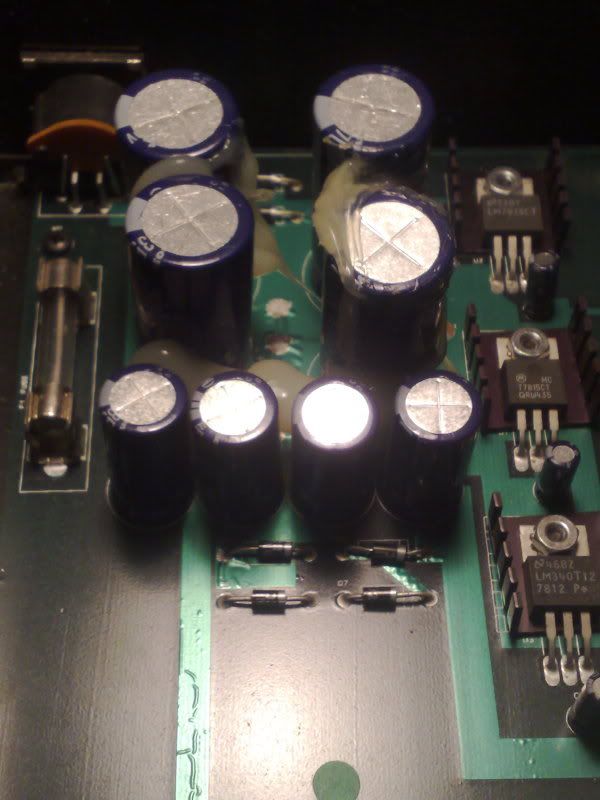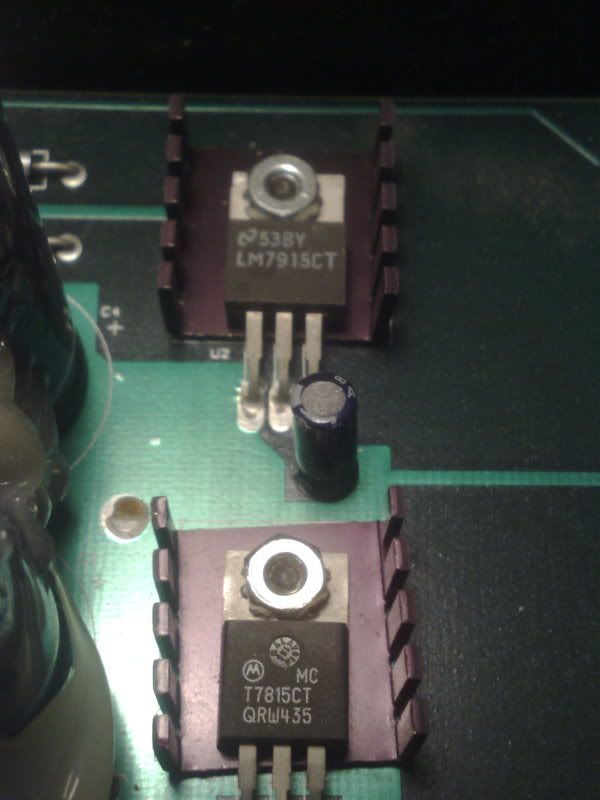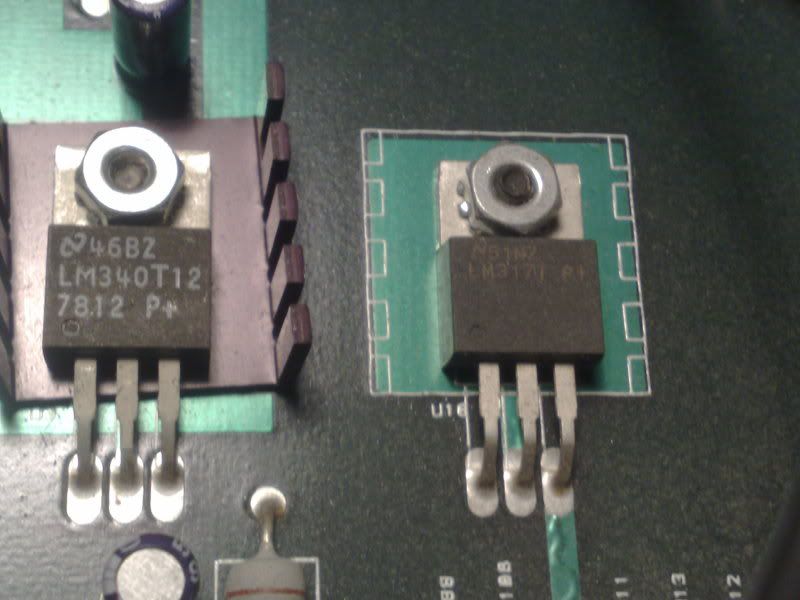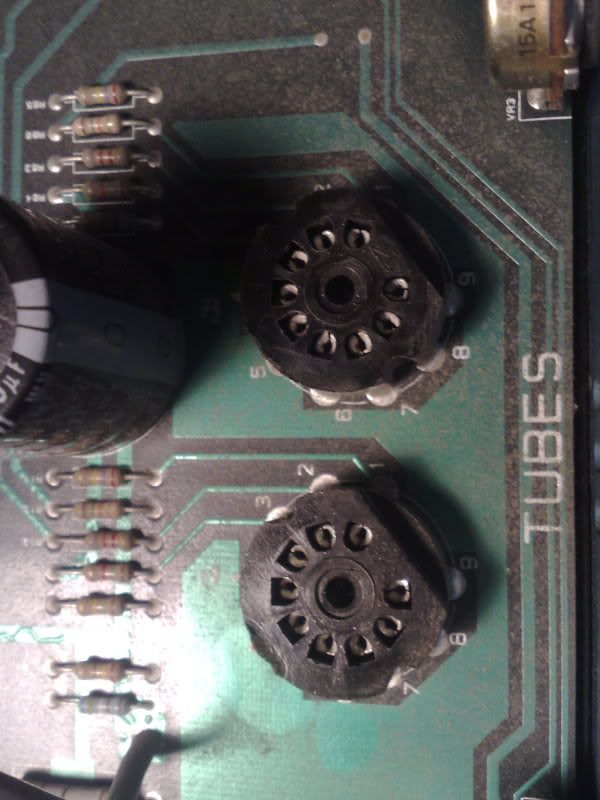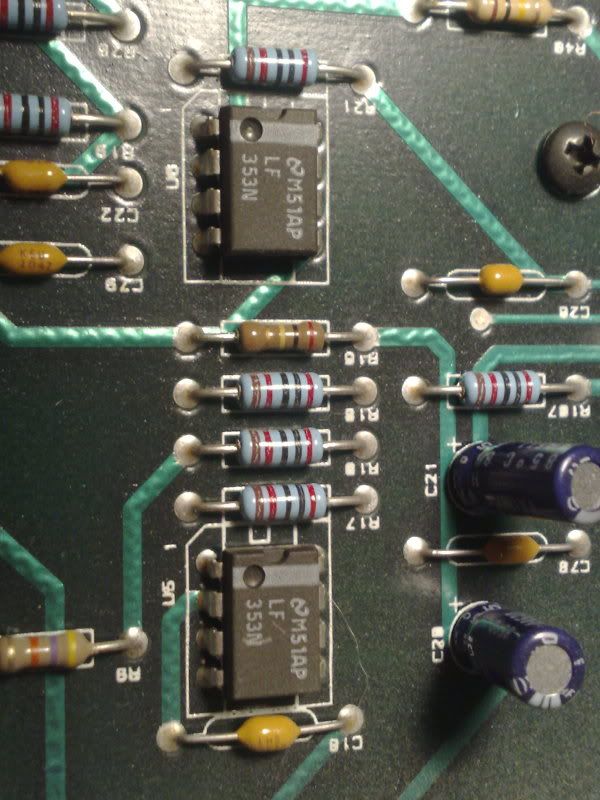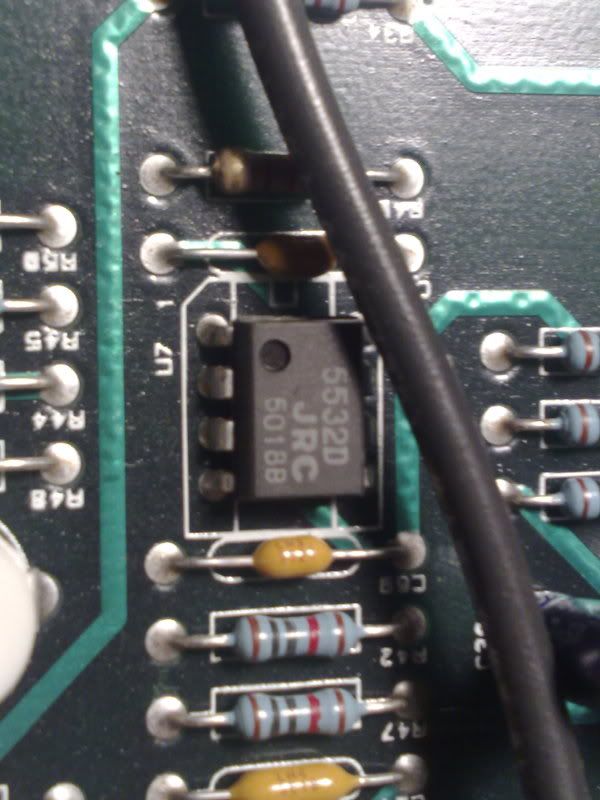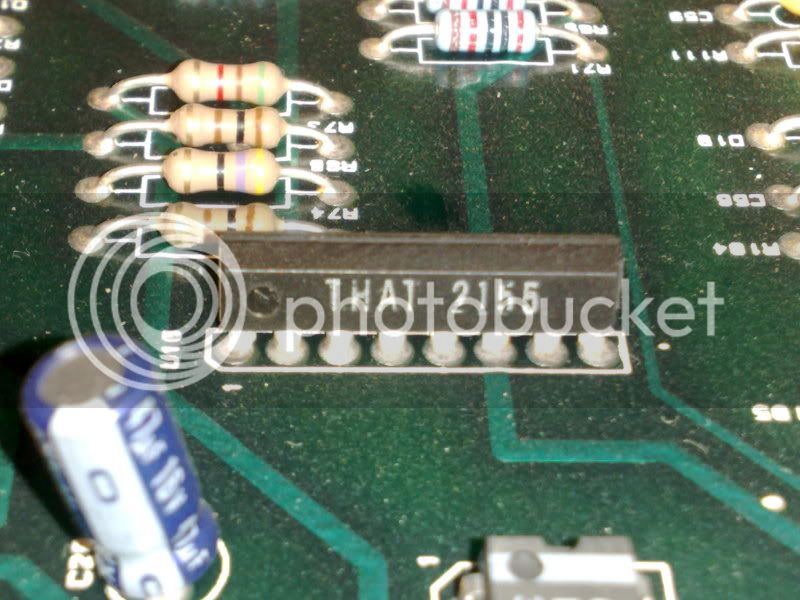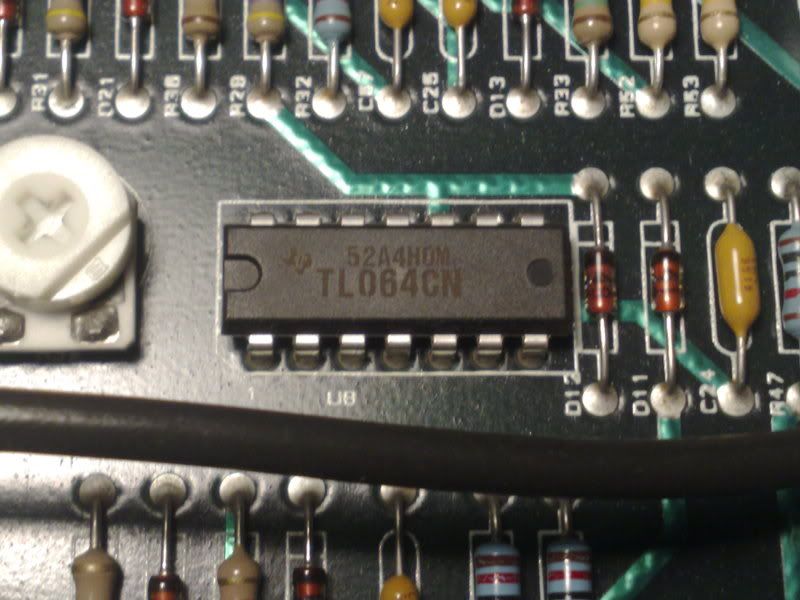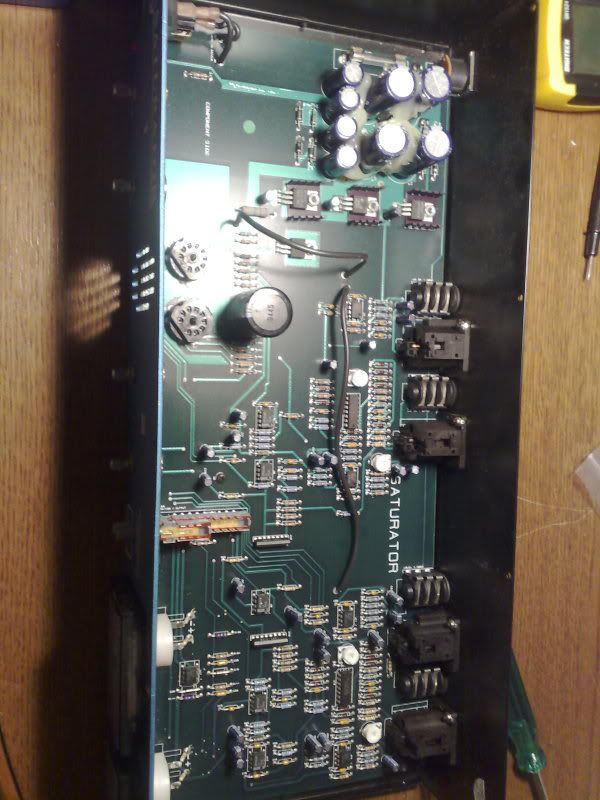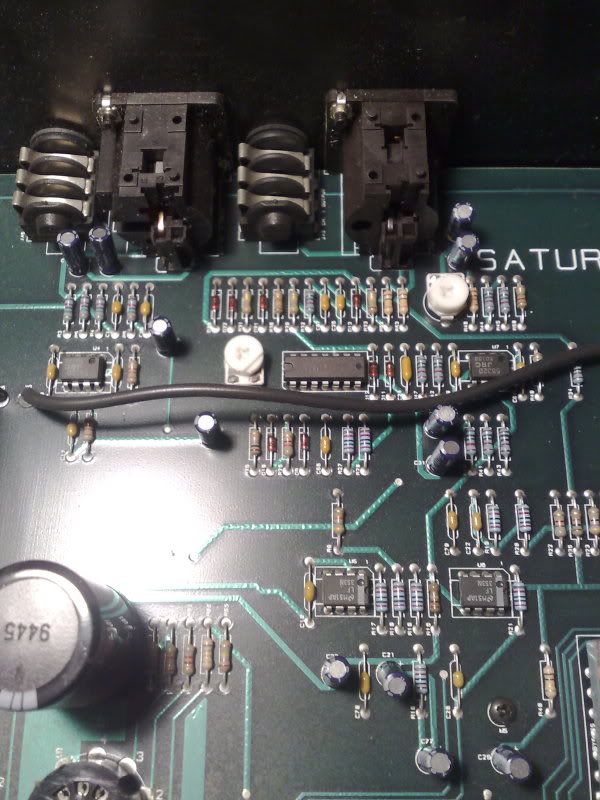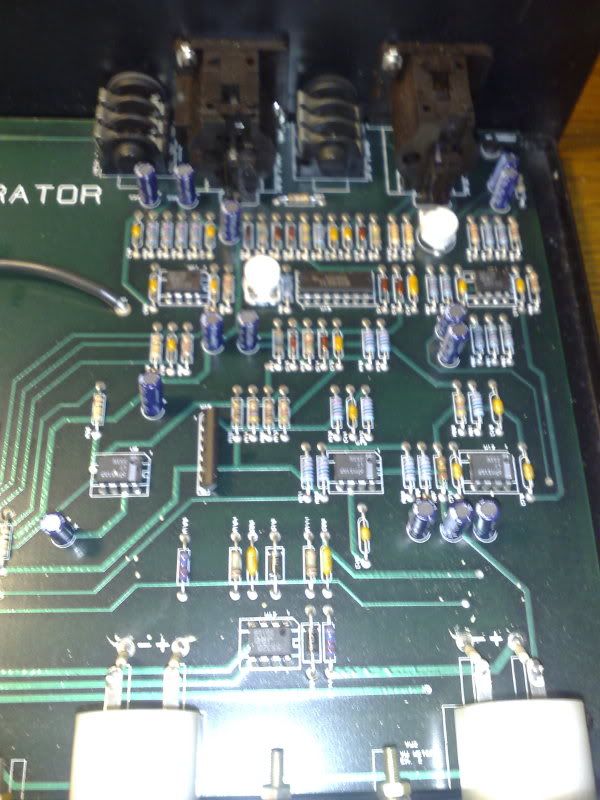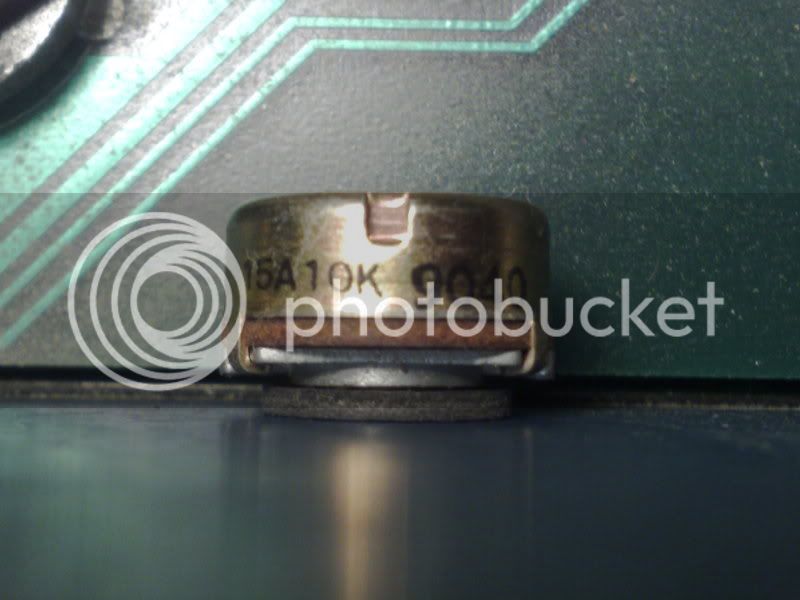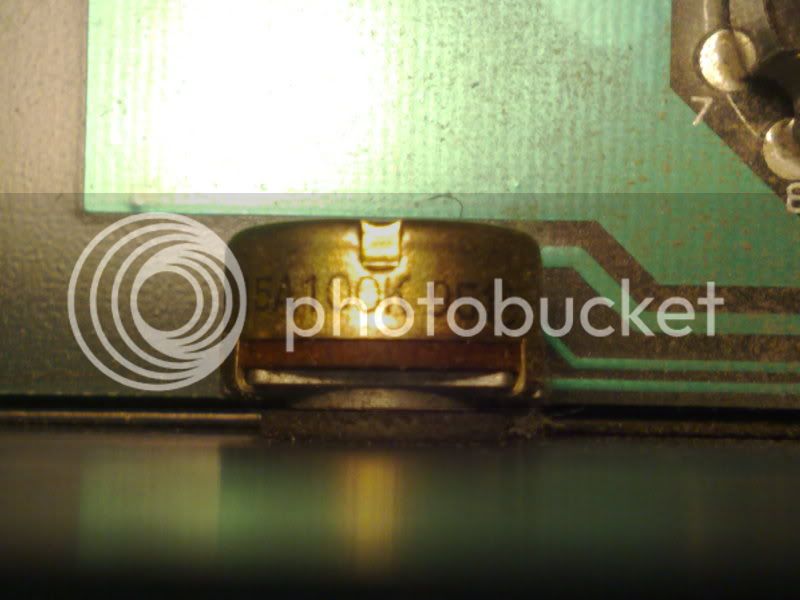Hi everybody,
I`m new to the forum - please don't mind my bad english, I'm from germany ;D
Like peat I am trying to find the schematics for the RSP Saturator. I have already contacted someone at Rocktron/GHS who was involved with RSP in the 90ties but he doesnt have the schematics, he only had the manual but it doesn't contain any helpful infos.
So, currently I`m redrawing the schematic for the Saturator, which isn`t an easy task, especially for beginners like me. Any help would be appreciated.
Since some of the posts already "disqualifiy" the saturator because of its starved plate design, here is why i am doin all this:
The first tries with this unit when I got it were really dissapointing. The unit distorted easily with just a twist of the pot and the distortion wasn`t pleasing at all, it was nasty. So I tried swapping the tubes - no improvement (I used vintage NOS Telefunkens!). At first I just wanted to sell the unit straight away and then I discovered that with a lower input from the DAW, you can have a much better control of the distortion (because of the wider range you can go with the pot) and also the distortion itself was more pleasing! I do not know why this is but maybe other components in the circuit contribute to the overall sound too. What I did then was to take out the TRS input jack and wire a passive volume contorl to this input
http://www.jlmaudio.com/PSVC.jpg. That helped to really improve the distortion characterisik and you can somehow even tweak the "tone" of the unit.
The other thing that peat mentioned is the high cut, a trimmer on the pcb. I replaced it with a pot. With this additional control you can go from really vintage (max high frequ. damp) to "modern"/industrial like, according to the settings of the (new) input and drive controls.
Now, this really helped to turn the unit into a really great tool. I made mixes with and with out it and it not only improved the room info content and thickness of the sound (a little hf-damp is all you need). Now my saturator is much more than a saturation tool, it is a COLOURATION TOOL.
So, despite the starved plate design it is a really great tool and i never got some of the sounds/colourations out of any other plugs/hardwares i used so far. I don`t compare it to real tube designs and exiter like tools because it is nothing like this. It is just a cool tool to add fatness/colouration/tone to a mix.
Hopefully we`ll get the schematic worked out

Cheers
Max
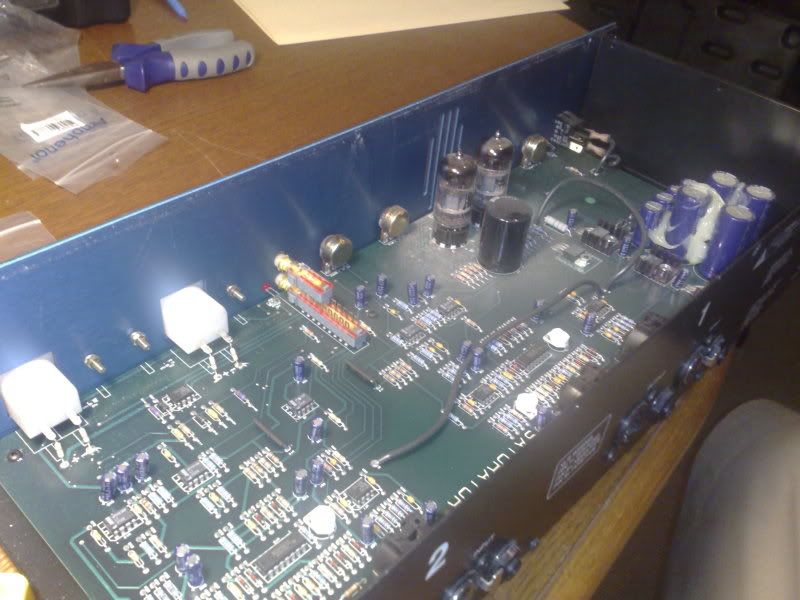

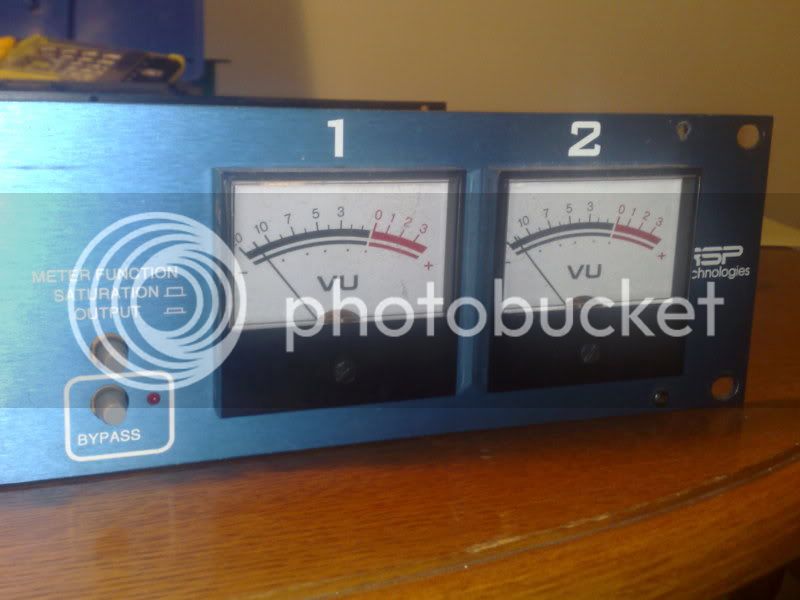























![Electronics Soldering Iron Kit, [Upgraded] Soldering Iron 110V 90W LCD Digital Portable Soldering Kit 180-480℃(356-896℉), Welding Tool with ON/OFF Switch, Auto-sleep, Thermostatic Design](https://m.media-amazon.com/images/I/41gRDnlyfJS._SL500_.jpg)












